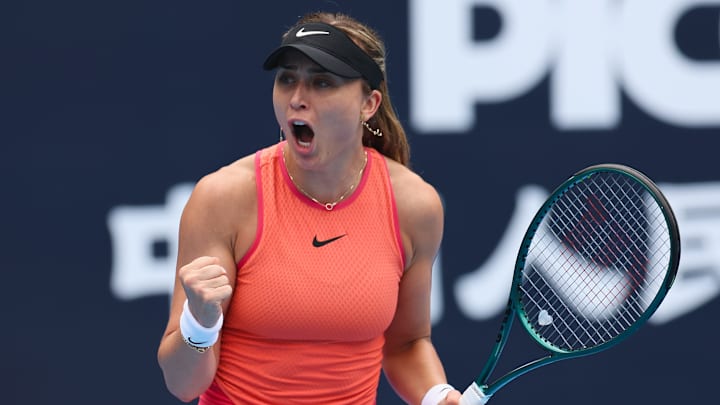Before the China Open began, the weakened WTA field generated much discussion. Iga Swiatek and Elena Rybakina were among several top players who withdrew from the tournament in Beijing. However, that has not stopped a blockbuster semifinal between Coco Gauff and Paula Badosa from being confirmed after both players won their quarterfinal matches on Thursday.
Gauff won their only other meeting this year. That came on clay at the Italian Open in May, with Gauff recovering from losing the first set to prevail 5-7, 6-4, 6-1. But Badosa, who was recently slammed by a doubles player, triumphed in three of the pair's other four meetings, and she had recently returned from a lengthy injury when they met earlier in 2024.
Badosa's 3-2 head-to-head record against Gauff shows her game troubles the American. This article gives three aspects of the matchup that favor the Spaniard. Those aspects, combined with how well Badosa has played recently, mean Gauff needs an excellent performance to reach the final.
Paula Badosa's formidable serve can get free points against anyone
Gauff is one of the best returners women's tennis has ever seen. She has won the highest percentage of return games on the WTA Tour so far in 2024, showing how formidable last year's US Open is on her opponent's serve. Only best servers in the women's game can regularly get free points against her on serve.
Badosa is one of the few players on that list. Her total of 227 aces this season is one of the highest on the WTA Tour. Admittedly, her serve can also be somewhat inconsistent, as demonstrated by the 256 double faults she has struck, which is also among the highest this year.
However, most of those serving issues occurred in the early stages of her return from the lengthy injury previously mentioned. Badosa's serve has been flowing in the last two months and even Gauff's return could struggle if her powerful opponent finds her spots throughout the match.
Badosa is adept at punishing weak second-serves
Gauff's struggles with her second serve have received much media coverage. She had issues with that shot once again in the previous round against Yuliia Sarodubtseva but managed to fight through after losing the first set. Hanging on and finding a way to win despite repeated issues with her second-serve and forehand is something she often manages, which is very admirable.
Despite that impressive mentality, Gauff will find it extremely difficult to beat Badosa if her second-serve falters again. The double faults harm the American against any opponent, but Badosa is among the best at jumping on weak second serves, especially with her two-handed backhand.
That presents a challenging balancing act for Gauff. She cannot afford to hit many double faults, but the 20-year-old will also be in trouble if she rolls in her second serve without much pace. Gauff's quality in other areas means she can never be ruled out, but it could be a tough day if her second serve falters again.
Badosa's forehand is capable of dominating Gauff if she uses it wisely
Although Badosa's backhand is impressive, Gauff has an advantage in that department against every opponent she faces. The US Open winner's consistency, depth, and ability to change the angles with her backhand is unmatched on the WTA Tour. But the forehand matchup is more challenging for the world No. 6.
Gauff hits her forehand with heavy topspin to counter the unforced errors that can sometimes occur with that shot. Badosa often strikes her forehand in a similar manner with heavy spin to push her opponents behind the baseline. The recent US Open quarterfinalist's ability to do that successfully is one of the reasons why she has had many strong results on clay.
However, Badosa can also flatten out her forehand and hit it harder than most WTA players. That variety between pace and spin makes it one of the best forehands in the game when it is working. Low and fast balls to her forehand are the other area Gauff struggles with the most, along with her second serve. Badosa will get much joy if she picks the right moments to go hard into Gauff's forehand.
